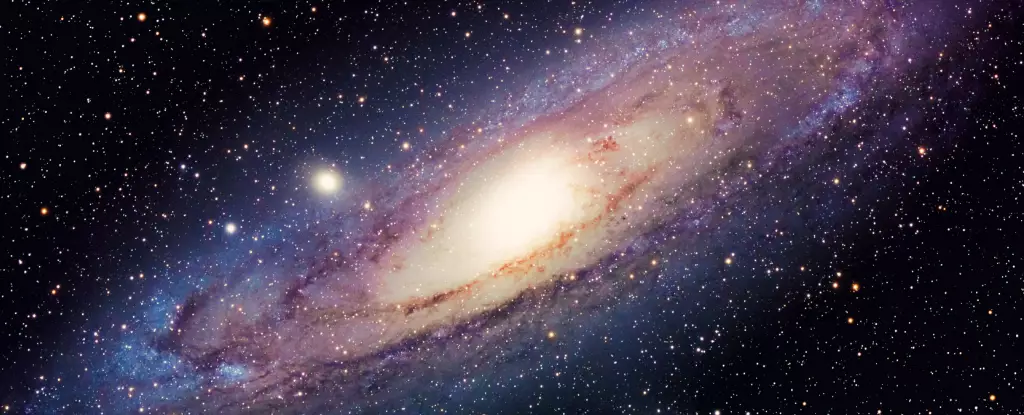As we gaze into the vast cosmic expanse of our Milky Way galaxy, it is easy to be mesmerized by the beauty and grandeur of the stars and planets within it. However, if we look closer, we may uncover the hidden secrets of a violent past lurking in the shadows of the gas and starlight. Recent data collected by the Gaia satellite has shed light on what could be evidence of a dramatic encounter between the Milky Way and a neighboring body of stars.
For decades, astronomers have been piecing together clues that point towards a significant event that may have shaped the structure of our galaxy. One such clue is the distinct S-shaped bend that can be observed in the Milky Way’s disk. This bend has long been speculated to be the result of a skirmish with a smaller neighboring galaxy, such as the Sagittarius Dwarf Spheroidal Galaxy. The recent analysis of tens of thousands of stars by an international team of researchers has revealed new details suggesting that this bend is not just a static feature but is actively propagating a wave through the galaxy.
Led by astronomer Eloisa Poggio, the researchers compared the positions and movements of young giants and Cepheids within the Milky Way. What they found was a pattern of oscillation that resembles the rolling motion of ocean swells, extending over a vast spatial distance within the galaxy. The outward-moving stars deviated from their paths at speeds of 10 to 15 kilometers per second, indicating a dynamic interaction occurring within the galaxy’s disk.
One of the central questions raised by this discovery is whether the corrugation and the underlying warp in the galaxy are connected or have separate causes. While it remains unclear whether these phenomena are linked, future numerical simulations may help shed light on the possible origins of these features. Removing the Milky Way’s bend as a factor revealed abnormal variations in star positions, hinting at unseen anomalies in the galaxy’s structure.
Our galaxy, like a master of disguise, conceals its turbulent past behind a veil of tranquility. Yet, by closely examining the movements and positions of stars within it, we may unravel the mysteries of its violent history. Searching for the subtle signs of stars out of place or moving in unexpected ways could lead us to uncover more traces of past galactic conflicts and events. As we continue to explore and analyze the secrets of our cosmic neighborhood, we may discover a rich tapestry of stories hidden within the Milky Way’s celestial expanse.


Leave a Reply